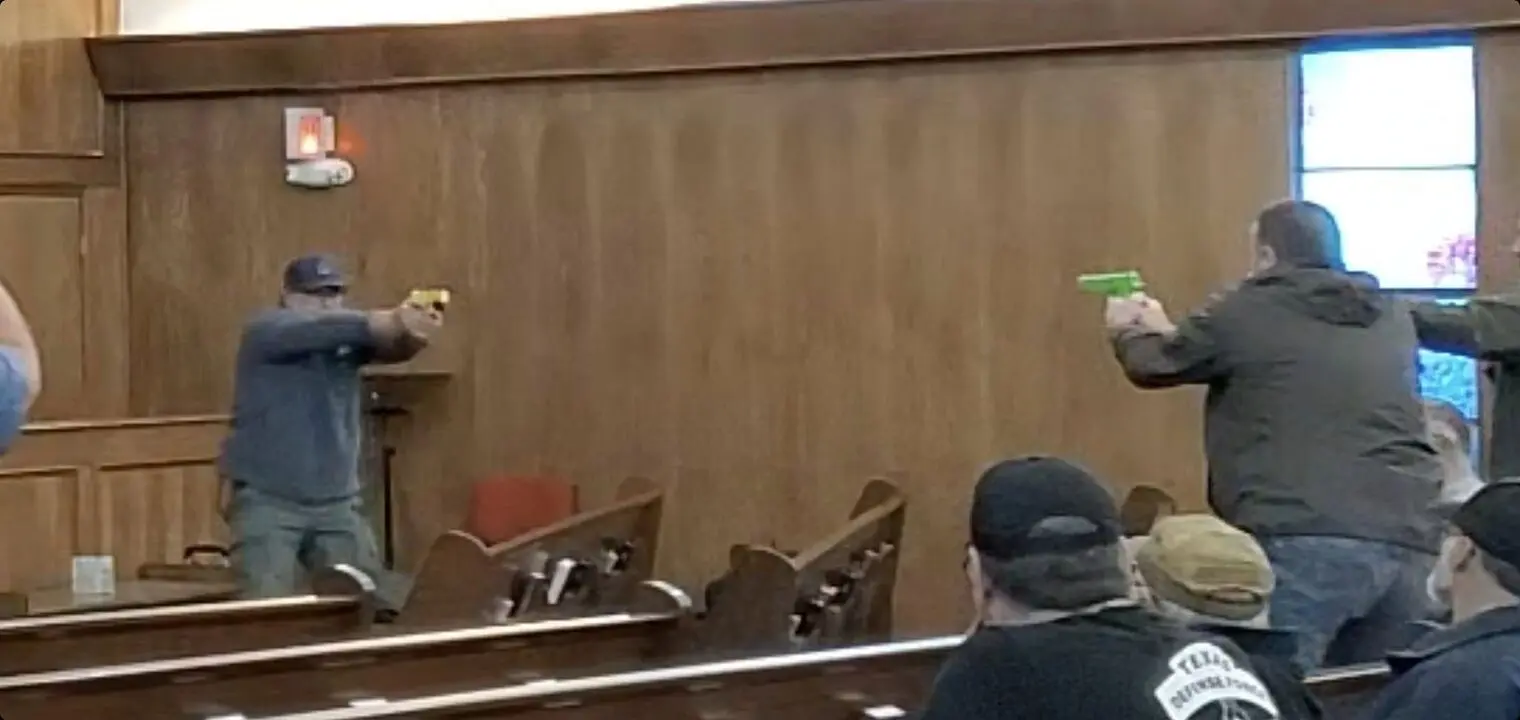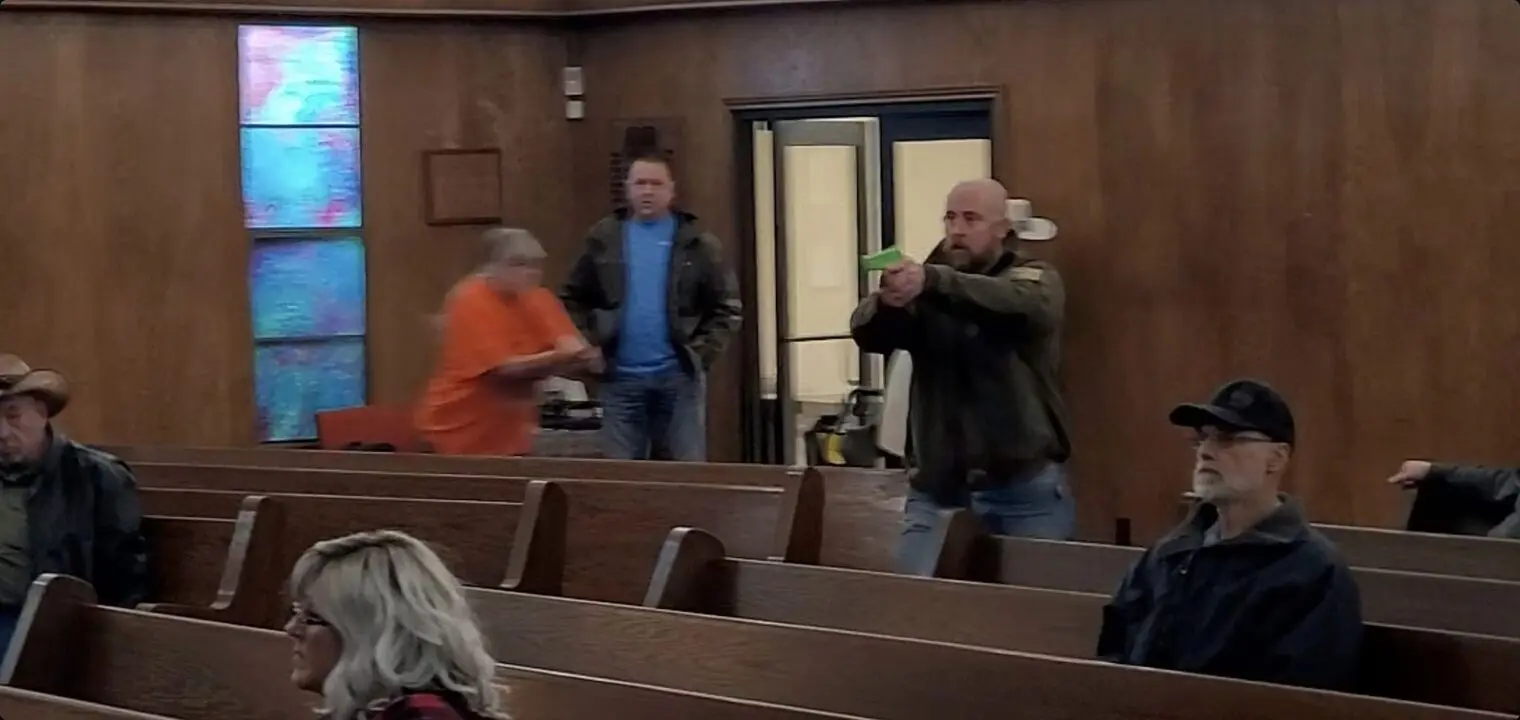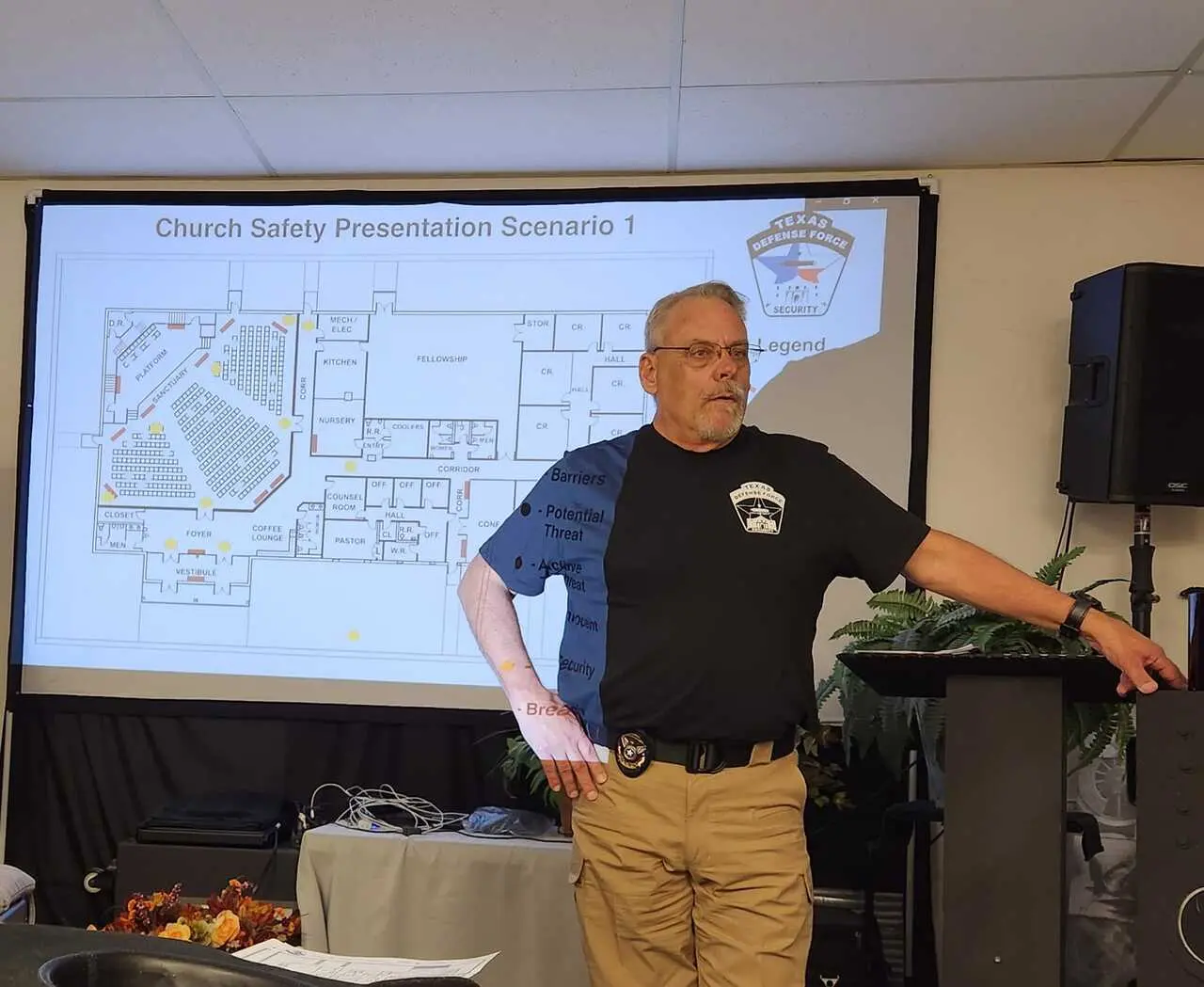In the quiet corners of our bustling world, churches stand as sanctuaries of solace, radiating a sense of tranquility that transcends the temporal. Here, individuals from all walks of life unite, seeking spiritual enlightenment, collective worship, a sense of community, and above all, peace. However, the shifting paradigms of our global society call for an acknowledgment of an often-overlooked aspect - church security.
Against the backdrop of heightened uncertainties, the importance of prioritizing church security and safety management has come to the fore. It is no longer a sidelined factor, but a paramount concern that weighs heavily on congregations and church leaders alike.
Moving forward, we must recognize that these spaces of worship are not cloistered from potential risks. From natural disasters, electrical hazards, to unfortunate instances of violence, churches must brave myriad vulnerabilities. A proactive approach, one that preempts and mitigates these perils, is thus integral to the well-being of the very community they nurture.

Understanding Church Security and Safety Management
A church's picture of tranquility hides a labyrinth of potential issues beneath its surface. These vulnerabilities, which can vary widely from location to location and congregation to congregation, influence church security and threat preparedness. As it stands, comprehending Church Security and Safety Management is an essential step towards making these sacred spaces safer.
This involves a shift in perspective—from considering safety a secondary concern to making it a focal point. Churches must understand and integrate safety norms into their daily operations, a change that could influence everything, from sermon delivery to congregation participation.
Simply put, investing time, resources, and energy into realizing church security and safety management isn't an option but an absolute necessity. As congregations gather together in the pursuit of spiritual enrichment, they ought not to fear their environment but find solace and peace within it.
As a beacon of hope and unity, churches play a crucial role in the fabric of our society. Today, they have an added responsibility—to ensure they are safe, secure, and prepared for any eventuality. This duty goes beyond physical integrity, extending to the emotional and psychological well-being of the congregation. Integrated safety and security management strike a balance between providing solace and ensuring the congregation's safety, making them inseparable from the church's core mission.
When this equilibrium is achieved, safety doesn't just stay a policy—it becomes an integral part of the church's identity, transcending from written protocols to instilled beliefs. After all, churches aren’t just places of worship; they're homely spaces where community, security, and faith intertwine.
Risk Assessment and Preparedness in Church Security
For a church, the journey toward a safe and secure environment often begins with Risk Assessment and Preparedness. This process requires assessing all potential risks and setting in motion the wheels of a preemptive action plan.
Churches, despite their solemnity, aren't glasshouses shielded from the winds of peril. They face potential risks just like, if not more than, many other public spaces. Therefore, understanding these vulnerabilities is key. Does the building's architecture have significant blind spots? Are there unchecked access points? How predictable are operational procedures, and could they be exploited? Each question unearths a new layer of vulnerability ready to be addressed.
Churches have an incredible merit—they run on routines, plan schedules with near perfection, and the congregation can predict proceedings to the tee. However, this routine could potentially become a church's Achilles heel. It isn't just the congregation that learns the patterns of the church—potential threats do too.
To prevent this, churches need an Armed Intruder Preparedness Plan - a safeguard that protects the people, the property, and the sanctity of the worship space. It poses a serious deterrent for potential threats and serves as an essential line of defense during dangerous situations.
The actions taken today will define the course of tomorrow. In the context of church security, this couldn't be more accurate. Proactive measures, driven by thorough risk assessments, equip churches to better handle unexpected situations and, in some cases, prevent them from happening altogether. Bringing steadfast safety to places of faith and tranquility is no easy task, but with adequate preparedness, the church community can find assurance in their sanctuary's protection.
Implementing Security Measures
Just as a chain is only as strong as its weakest link, a church’s security is directly impacted by its weakest measure. Ergo, implementing robust Security Measures is a critical step towards creating a truly safe worship environment.
Taking effective security measures begins with understanding the legal and insurance implications of implementing such protocols. They set the scene for how security can be improved without infringing upon the legal rights of individuals and ecclesiastical laws. These guidelines are an essential compass that navigates churches through the legal landscape, ensuring their security protocols are robust and within bounds.
Church leaders have myriad responsibilities, but they are not alone in their pursuit of safety. An often under-estimated asset in church security is the congregation—particularly, the volunteers. From ushering people to their seats to assisting with church events, volunteers can play a crucial role in maintaining security. Leveraging volunteers in church security policy isn't just economical; it fosters a sense of community responsibility.
In today's digital age, technology is a steadfast ally. Incorporating technology into the church's security can augment the existing measures, creating a multi-tiered safeguarding system. Whether it’s CCTV cameras monitoring the church grounds or controlled access for certain areas, technological tools are a boon for modern church security.
Church events and services are times of celebration and spiritual communion. However, the surge in congregation numbers and varying attendees can pose security dilemmas. Having specialized security measures for such occasions is a practical way to enhance safety without compromising on the joy and reverence of the moment.
By understanding the intertwined nature of legal guidelines, congregational involvement, technological support, and event-specific measures, churches can implement an effective, holistic, and dynamic security system—ensuring every hymn is sung in safety, and every prayer is made in peace.
Church Security Training and Education
Proper training and education are essential for maintaining a safe and secure environment in churches. While implementing security measures and protocols is crucial, it is equally important to ensure that church staff and volunteers are equipped with the necessary skills and knowledge to respond effectively in emergency situations.
Churches should prioritize regular training sessions that cover a wide range of topics, including emergency response procedures, de-escalation techniques, crowd management, and first aid. These training sessions can be conducted by professionals with expertise in security and safety management or through partnerships with local law enforcement agencies. By investing in comprehensive training programs, churches can empower their personnel to handle challenging situations with confidence and expertise.
Building strong and collaborative partnerships with local law enforcement agencies is another key aspect of training and education. These partnerships can provide valuable resources, expertise, and support for enhancing security measures in churches. Law enforcement representatives can share best practices, offer guidance on emergency preparedness, and even conduct joint training exercises with church staff and volunteers.
In addition to training sessions, conducting regular drills and simulations can further enhance the effectiveness of the church's security response. These drills should include scenarios that simulate various emergency situations, allowing participants to practice their roles and responsibilities in a controlled environment. This hands-on experience can significantly improve reaction times and decision-making during actual emergencies.
Seminars and workshops on relevant topics, such as threat assessment and de-escalation techniques, can also contribute to the ongoing education of church staff and volunteers. By staying up to date with the latest trends and strategies in church security, individuals can continuously improve their skills and adapt to evolving threats.
It is important to emphasize that training and education should not be limited to security personnel alone. All members of the congregation, from ushers to the choir, should be aware of basic safety protocols and emergency procedures. This collective knowledge and understanding create a cohesive and vigilant community that can effectively contribute to a safe church environment.
By investing in comprehensive training and education programs, churches can ensure that their personnel are prepared to respond efficiently in any emergency situation. These proactive measures not only enhance the overall security of the church but also provide peace of mind for congregants, allowing them to focus on their spiritual journey without fear or distraction.
Remember, safety is a shared responsibility, and by prioritizing training and education, churches can foster a culture of preparedness and proactive action, ensuring the ongoing safety and well-being of their congregation.

Establishing a Church Safety Ministry
Church safety isn't a solitary responsibility; it's a communal endeavor. Like many other communal efforts within the church, establishing a Church Safety Ministry brings together congregational members in a shared commitment towards safety.
Starting such a ministry requires meticulous planning—a strategic roadmap that accounts for the church's unique needs, available resources, and operating environment. An essential first step involves gathering a team committed to the cause, armed with an unshakable desire to contribute towards a safer worship space.
Gaining widespread support from the congregation for the safety ministry can be an uphill task. However, breaking down the need for such an initiative and highlighting its impact can help garner enduring support. Regular, transparent updates about the ministry's progress can further solidify this commitment.
Every good ship needs an able captain. Similarly, the church safety ministry needs capable safety teams steering it in the right direction. They aren’t just gatekeepers but also the bridge between the congregation and the anointed mission of church safety. The roles of these teams diverge from assisting in emergencies to patrolling during church gatherings actively.
Communication forms the lifeblood of any team. Within a church's safety team, effective communication ensures seamless operation and quick response times. Further, a well-formed reporting protocol adds another layer of accountability to the ministry, shaping an efficient and effective safety net.
By prioritizing a church safety ministry, congregations not only contribute to a safer worship space but also embed these safety ideals into the very ethos of their community. Through this mantle of united responsibility, church security can shift from being just an institutional responsibility to a collective undertaking, shaping safer sanctuaries under the shared shelter of faith.
Continual Improvement: The Lifeline of Church Security


In the world of security, stasis is not an option. Ensuring church safety demands perseverance, adaptation, and continual improvement. Thriving on the principles of quality management, the process of improving church security is less of an uphill journey and more of a spiraling climb towards resilient security practices.
The first step of this climb is acknowledging that security is a dynamic process. Threat landscapes shift, vulnerabilities evolve, and so too should the church's response to such eventualities. A static security protocol may not withstand the wave of change. Hence, continuous evaluation of safety measures becomes a necessity.
Evaluation is half the battle; acting upon the feedback is the other half. By systematically incorporating the insights gained from these evaluations, churches can reinforce their proposed security systems to new heights, fortifying them for potential threats.
Shaping a culture of safety is as essential as the security frameworks themselves. The eventual goal should be an environment where safety isn't just adhered to but embraced sincerely at every level. From heads of ministries down to the youngest churchgoer, the cloak of safety ought to be a shared responsibility.
Finally, all good improvement strategies harness the power of acknowledgment. Celebrating the milestones, recognized for their role in safeguarding the worship space, positively impacts morale and encourages better participation. It's about converting the daunting task of ensuring safety into a shared victory - one celebrated in unison.
By focusing on continual improvement, churches can ensure that security isn't a one-time effort, but a relentless pursuit - much like the church's unwavering faith. As the hymns resound within the sanctuary, let ease and security be the echoing undertones, ensuring a steadfast spiritual journey within safe bounds.
Conclusion
Change is the only constant, and our world continues to evolve at a dizzying pace. With it, the challenges we face morph, demanding dynamic responses to safeguard our sacred spaces. The realm of church safety is no exception to this rule. The pressing concern of ensuring safety and security for everyone within the holy confines of a church is a responsibility we cannot shy away from.
From understanding the intricate layers of church security and safety management to assessing risks and sharpening preparedness plans, the journey to a safer church ecosystem is multifaceted. Not a single stone can be left unturned. Security measures and their effective implementation remain a cornerstone for achieving this aim, backed by rigorous training and education. A safety ministry fortified by a deep-rooted culture of continuous improvement can help towards realizing this vision.
We’ve ventured through the labyrinth, appreciating the different hues of the tapestry that makes up church security measures. Along the journey, we’ve focused on various risk assessments, taken a closer look at security protocols, emphasized the benefits of education and training, and even delved into the importance of a dedicated church safety ministry. Finally, we highlighted the need for a relentless commitment to continual improvement.
This holistic approach to church safety management aims to cement a sturdy foundation for a culture of safety within our worship spaces. As we return to the tranquil confines of our churches, let's not forget the importance of safety, and strive continuously to foster an environment where both faith and security find room to flourish. As we worship, let's also pledge to protect the sanctity of our sacred spaces, for every prayer offered in a safe and secure environment only echoes louder in the heavens.
It involves recognizing potential risks and vulnerabilities in churches, preparing for emergencies, implementing robust security measures and continual improvement. It's important to understand potential vulnerabilities in the church environment. Risk Assessment is a process that assists in identifying these issues and preparing appropriate responses. Measures can include legal and insurance considerations, implementing technological security systems, involving volunteers in security operations, and developing event-specific safety protocols. Regular training of church staff and volunteers in security protocols is pivotal. Building partnerships with local law enforcement can also enhance overall security and preparedness. Safety Ministry groups dedicated individuals for the task of maintaining security in the church, often involving congregation participation, improving communication, and fostering a culture of safety. Continual Improvement is the constant evaluation and refinement of existing security measures, fostering a culture of ongoing safety and readiness in the face of evolving threats. The congregation can actively participate in volunteer security programs, support the establishment of a Safety Ministry, and foster a collective commitment to uphold safety norms. Effective communication can ensure seamless operation, swift emergency responses, and strengthens accountability within the safety team, ultimately enhancing overall security. Church Safety Ministry acts as a central entity that oversees all security operations, ensuring a unified approach to risk management, proactive planning, and response to emergencies. Churches should constantly monitor, evaluate, and update their security measures. Establishing an environment of continual improvement can ensure that security initiatives stay effective.Frequently Asked Questions:
What does Church Security and Safety Management entail?
How crucial is it to conduct a Risk Assessment in the church?
What are some effective Security Measures for churches?
How can Training and Education enhance church security?
What is the role of a Church Safety Ministry?
What defines Continual Improvement in the Church’s Safety profile?
How can a Congregation contribute to Church Safety?
Why is Effective Communication imperative within a Church Safety Team?
How does Establishing a Church Safety Ministry aid in security?
How can churches ensure the Ongoing Effectiveness of their Security Initiatives?